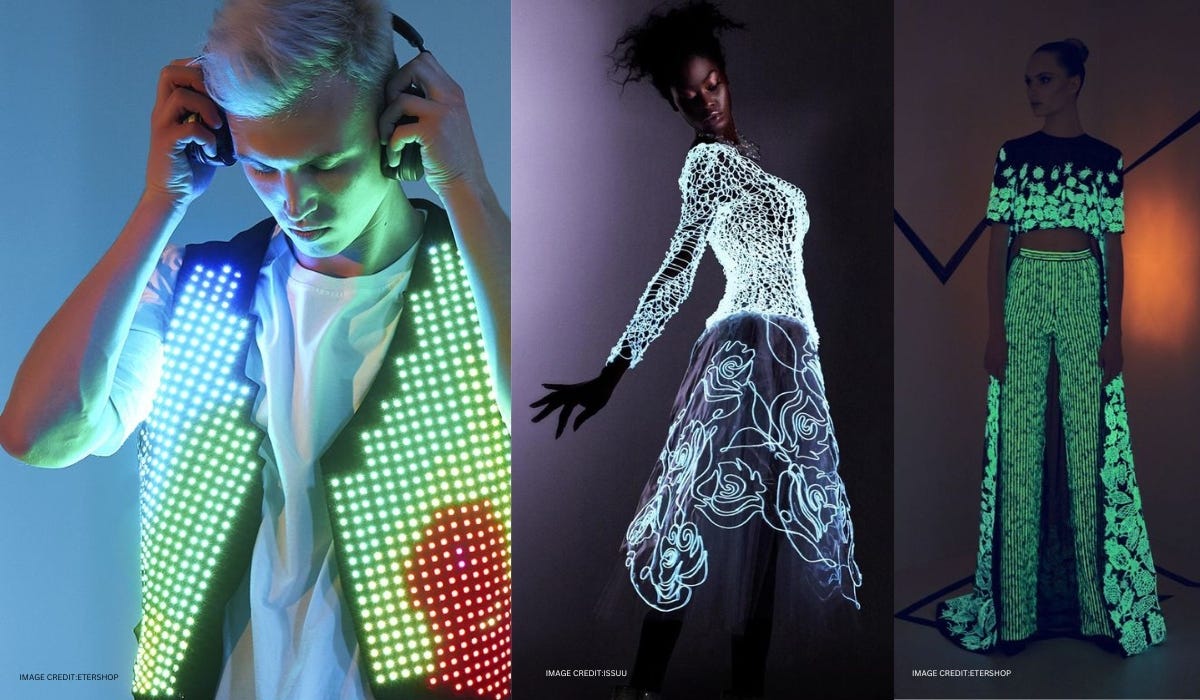
The fashion industry, celebrated for its constant evolution, is undergoing a transformative technological revolution that transcends mere aesthetics. Smart fabrics, a fusion of fashion and cutting-edge technology, are redefining clothing by seamlessly integrating functionality, connectivity, and innovation. From monitoring health metrics to responding to environmental conditions, smart fabrics offer a glimpse into a future where clothing becomes not just a style statement but a functional and interactive part of our lives.
The Evolution of Smart Fabrics
1. Embedded Sensors and Electronics:

Smart fabrics are characterised by the integration of sensors, actuators, and electronic components directly into the textile. This includes the use of conductive fibres, threads, and flexible circuits that allow for the seamless incorporation of technology without compromising the comfort or aesthetics of the garment. These embedded elements can perform a range of functions, from tracking biometric data to providing interactive features.
2. Wearable Technology:’
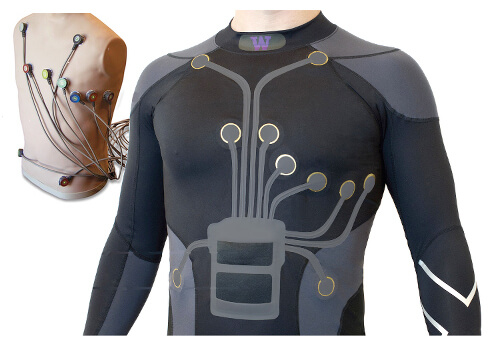
The rise of wearable technology has been a driving force behind the development of smart fabrics. Wearables, such as fitness trackers and smartwatches, have demonstrated the potential for integrating technology into our daily lives. Smart fabrics take this concept further by embedding technology directly into the clothing we wear, eliminating the need for additional devices. A notable example is the integration of heart rate monitors into sports apparel.
3. Responsive and Adaptive Materials:
Smart fabrics often feature responsive and adaptive materials that can react to external stimuli. This includes fabrics that change colour in response to temperature, light, or touch. These materials not only contribute to the aesthetic appeal of garments but also open up creative possibilities for designers to experiment with dynamic and interactive clothing. An example includes temperature-sensitive fabrics used in fashion and activewear.
Applications of Smart Fabrics in Fashion
1. Health and Fitness:’
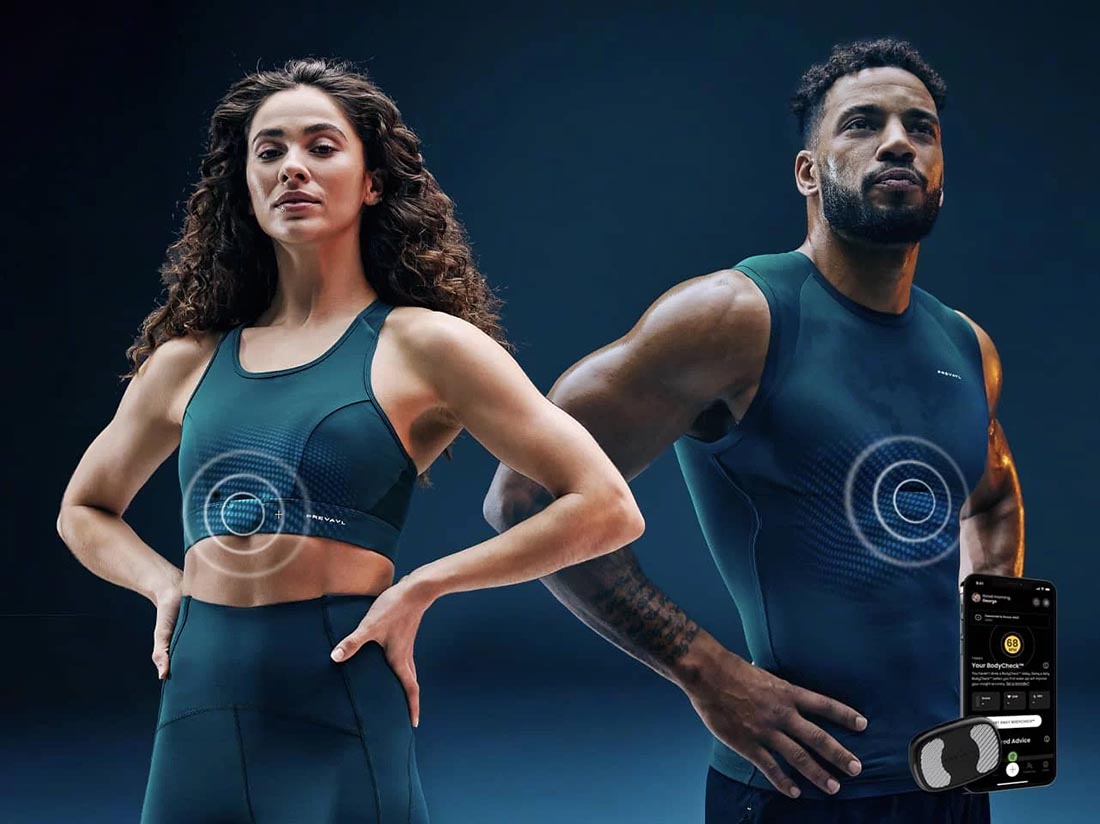
Smart fabrics are making a significant impact in the health and fitness sector. Garments embedded with sensors can monitor vital signs, track physical activity, and provide real-time feedback to users. For example, a smart athletic shirt may measure heart rate, breathing rate, and calories burned, offering a comprehensive approach to fitness monitoring.
2. Fashion Tech Accessories:

Smart fabrics extend beyond clothing to accessories like bags, hats, and gloves. These accessories can incorporate features such as built-in GPS tracking, wireless charging capabilities, or even touch-sensitive surfaces for interactive functionality. Fashion tech accessories seamlessly blend style with utility, catering to the modern consumer’s desire for both fashion and functionality. Notable examples include bags with integrated phone-charging capabilities and hats with embedded GPS for navigation.
3. Climate-Controlled Clothing:
Climate-controlled clothing utilises smart fabrics to regulate temperature and enhance comfort. This is achieved through the integration of materials that can respond to changes in the environment. For instance, a jacket with thermoregulation capabilities may adapt to the ambient temperature, providing warmth in cold conditions and ventilation in warmer weather.
4. Augmented Reality Apparel:

The fusion of augmented reality (AR) and smart fabrics opens up novel possibilities in the fashion industry. AR-enabled garments can create immersive and interactive experiences for users. Virtual elements, such as animations or additional information, can be overlaid on the physical garment when viewed through a compatible device, blurring the lines between the virtual and real worlds. Examples include clothing that displays virtual animations or additional information when viewed through AR-enabled devices.
5. Fashionable Tech for Safety:
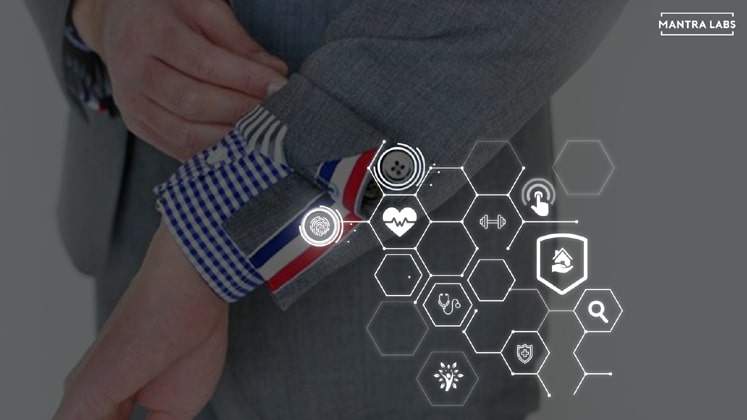
Smart fabrics play a crucial role in enhancing safety features in clothing. For example, reflective materials embedded in garments can improve visibility in low-light conditions, contributing to pedestrian safety. Similarly, smart textiles with built-in sensors can detect changes in posture or movement, providing alerts in situations where safety is a concern.
6. Sustainable Fashion:
The integration of technology into fashion extends to sustainability efforts. Smart fabrics can be employed to create garments with enhanced durability, reducing the frequency of replacements. Additionally, technologies like 3D knitting allow for the creation of seamless garments, minimising waste in the production process. The marriage of technology and sustainability aligns with the growing demand for eco-friendly fashion solutions. An example is the use of recycled smart materials in creating sustainable fashion pieces.
Challenges and Considerations:
1. Washability and Durability:
One of the challenges facing smart fabrics is ensuring that embedded technology remains functional after repeated wash cycles. Innovations in washable conductive materials and flexible electronics are addressing this concern, but durability remains an ongoing consideration for designers and manufacturers.
2. Power Supply:
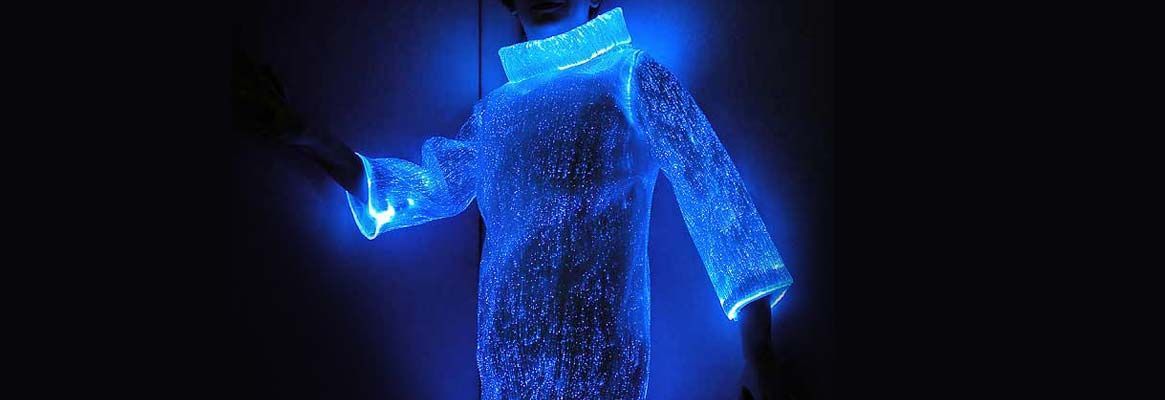
Many smart fabrics require a power source to operate embedded sensors and electronic components. Developing lightweight and efficient power solutions, such as flexible batteries or energy-harvesting textiles, is crucial to ensuring the practicality and usability of smart garments.
3. Data Security and Privacy:
As smart fabrics collect and transmit data, concerns about privacy and data security come to the forefront. Designers and manufacturers must implement robust security measures to protect user information and address potential vulnerabilities in connected clothing.
The Future of Smart Fabrics:
1. Integration with Everyday Clothing:
The future of smart fabrics lies in their seamless integration into everyday clothing. As technology becomes more compact and flexible, consumers can expect to see a broader range of garments with embedded functionality, from smart business attire to casual wear.
2. Medical Monitoring and Healthcare Applications:
Smart fabrics have the potential to revolutionise healthcare by providing continuous monitoring and feedback. Garments equipped with health sensors could offer real-time data to healthcare professionals, allowing for proactive interventions and personalised treatment plans.
3. Customization and Personalization:

Smart fabrics enable a new level of customization in fashion. Clothing with adjustable elements, such as colour-changing fabrics or adaptable shapes, allows consumers to express their individuality in dynamic ways. Personalization through technology will likely become a key trend in the fashion industry.
4. Collaboration with Fashion Designers:
Collaborations between technology innovators and fashion designers will play a pivotal role in the evolution of smart fabrics. These partnerships will not only drive creativity but also ensure that the technology seamlessly integrates into the artistic vision of the fashion industry.
Conclusion
Smart fabrics represent a paradigm shift in the fashion industry, where technology is not merely an accessory but an integral part of the garment itself. The fusion of fashion and technology is giving rise to a new era of clothing that is not only aesthetically pleasing but also functional, interactive, and adaptive to the needs of the wearer.
As the capabilities of smart fabrics continue to expand and technology becomes more woven into the fabric of our lives, the future of fashion holds exciting possibilities. From health monitoring to climate adaptation, the integration of technology into clothing is transforming the way we approach style, comfort, and functionality. In this dynamic landscape, smart fabrics are not just a trend; they are a glimpse into the future of fashion where innovation and creativity converge to redefine the very essence of what we wear.” Write this with known examples

